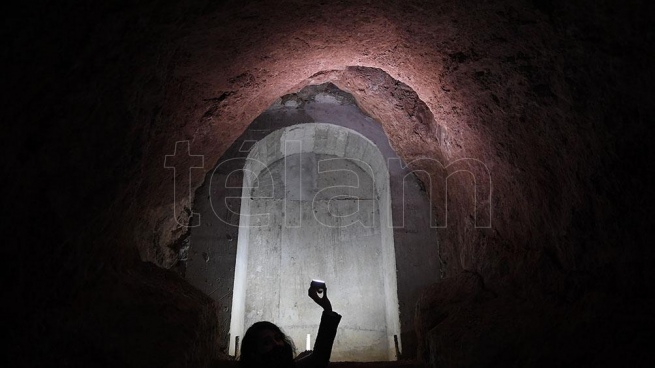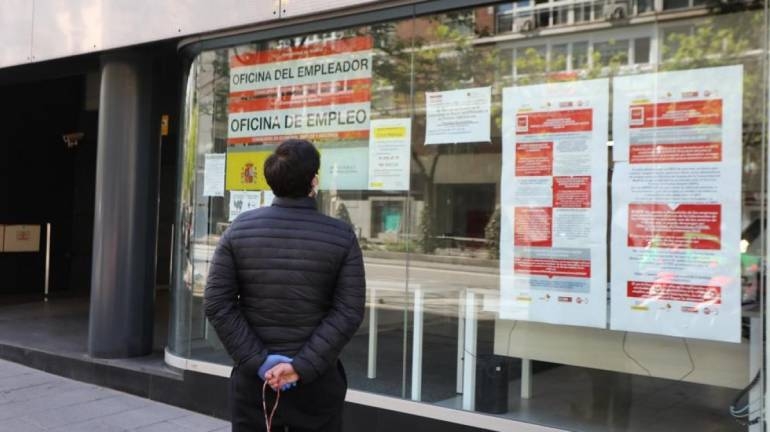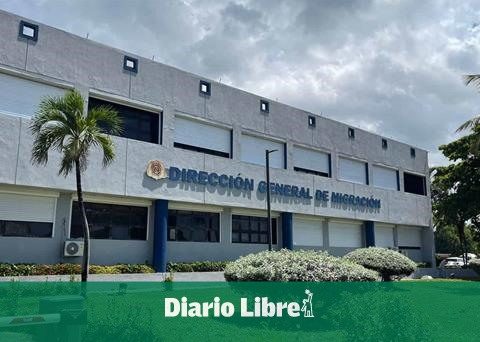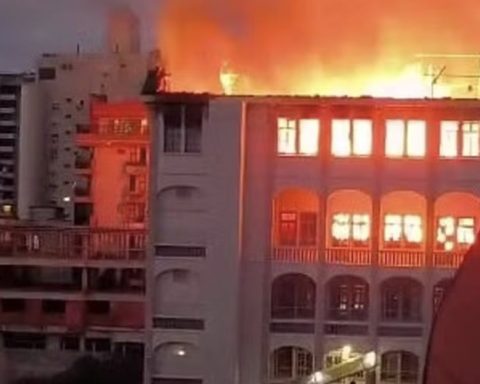A Jesuit cloister and tunnel from the 18th century, located in the church of San Ignacio in the historic “Manzana de las Luces”, in the Buenos Aires neighborhood of Monserrat, were opened to the public with the inauguration ceremony and blessing of the commissioning works. value of that infrastructure.
The inauguration of the works coincided with the celebration of the 360 years of the installation of the Society of Jesus in the emblematic Manzana, known today as Las Luces.
The priest Francisco Baigorria, parish priest of the church of San Ignacio located in Bolívar and Alsina, today presided over a mass of thanksgiving for the “enhancement, refurbishment and reopening” of the old cloister of the Colegio Grande de San Ignacio, later Real Colegio de San Carlos and the trace of Jesuit tunnels that cross the oldest temple in the City of Buenos Aires.
After the celebration, those present participated in the opening ceremony and blessing of the works, with the participation of Buenos Aires and national authorities and special guests in the field of conservation of architectural, cultural and religious heritage.
Ana María Di Cónsoli, coordinator and manager of the inaugural act and guided tours of the San Ignacio Project, together with Soledad Saubidet, recalled in dialogue with Télam that “this was initially a commission from the current Pope, who when he was still Cardinal Jorge Bergoglio to Father Francisco Baigorria the enhancement of this entire national historical monument which some at that time called the second ruins of San Ignacio ”.

“It started with the tunnels that were the leg of the building and one of the weakest parts; there, the engineer Fontán Balestra took charge of the structural consolidation of the work because the dome was in danger and the church had cracks ”, he indicated.
The specialist added that “from there a master plan was designed addressing the whole complex in an integral way, and what we are inaugurating today is the cloister of what was the large school of San Ignacio, the first secondary school in the City of Buenos Aires, which had been founded in 1617 in the Plaza de Mayo by the company of Jesus and which moved to this headquarters until the expulsion of the Jesuits in 1767 ”.
“This cloister was part of a set of four galleries with a central patio that, when the current building of the Buenos Aires National School is built, is reduced to this sector in which it was possible to preserve a space through which Belgrano passed and formed , Moreno, Castelli or Saavedra; Here the Patricios regiment also functioned, it was used for open councils, it was a temporary cathedral and the University of Buenos Aires was founded on the altar of the church ”, he highlighted.
“The tunnels were defensive and have a lot to do with the role of the Jesuits as architects, engineers and great masters of the art of construction; they introduce the system of construction in dome and vaults in the Río de la Plata; they were the makers of the construction of the colony ”, added Di Cónsoli.
The parish priest Francisco Baigorria told Télam that the works “represent a great contribution to the culture and heritage of the City of Buenos Aires, we are opening spaces such as this cloister that was closed since 1913 and the tunnels that were known to exist but are not I could go through them, with these recovery works now we can all go through an important part of our history ”.

“With this we culminate a 16-year process that began by mandate and order of Archbishop Bergoglio to preserve the heritage, at that time a plan was drawn up of which this is the last stage and now we begin again the work not to recover but to preservation ”, he completed.
In addition to the cloister of the old school, the parish priest said that another space that “was recovered and re-functionalized is the most important and significant section that remains of that original layout that wonderfully united the most solid and safe buildings in Buenos Aires in colonial times.
It is about the underground passages, built by strategy and military tactics in the face of possible invasions that existed or could have existed in times of the Viceroyalty of a weakened crown in Europe and a constant fear and threat of being invaded and taken over by another reigning crown ”, he explained .

On Saturday the 13th, at 3 pm, guided tours will be enabled and will be held on Tuesdays and Saturdays at the same time.
On the way, about an hour to an hour and a half, you will access the north tower of the church, then you will go to the south tower, from there you will go down to the cloister and finally to the tunnels.
The cost of admission will go towards the restoration and maintenance of the temple. You can reserve a place or write in advance to [email protected].


















